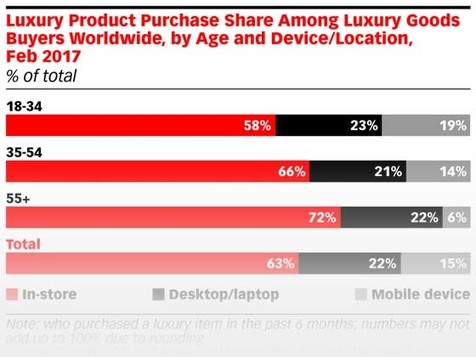July 24, 2017
Most luxury buyers still prefer the in-store experience for the reasons they always have: Materials and fit are often important, and attentive customer service comes with the territory. But digital channels are playing a larger role in the path to purchase.
As with ecommerce in general, global online sales of luxury goods are growing faster than luxury sales overall, and that is expected to remain the case for the foreseeable future.
“Luxury brands were slow to take to ecommerce,” said eMarketer’s Krista Garcia, author of a new report that highlights trends in the luxury market around the world. “Today consumers expect a digital presence, even from old-guard brands, and shoppers are more global than ever and not content to settle for products available only in their home countries, or within driving distance.”
Worldwide digital luxury sales are a bright spot compared with in-store sales. According to a December 2016 report from Euromonitor, global brick-and-mortar luxury sales will increase at a compound annual growth rate (CAGR) of 2% during 2016–2021 vs. 8% for digital. Just like digital sales overall, digital luxury has more room to grow.
Sourced through Scoop.it from: retail.emarketer.com




Leave A Comment